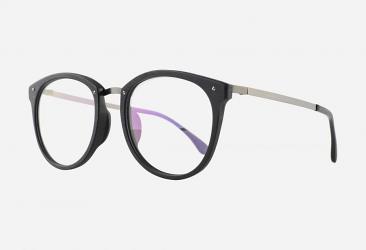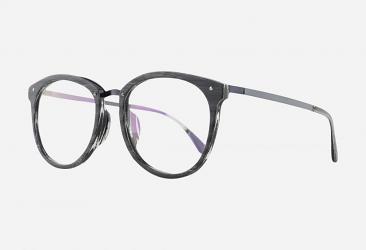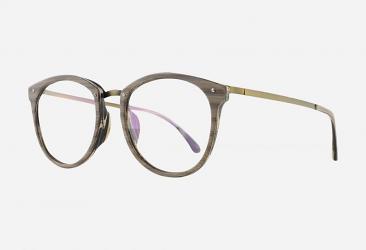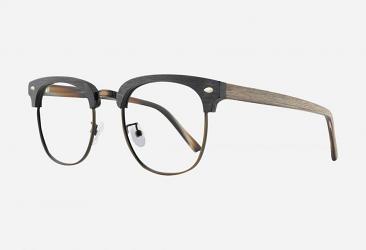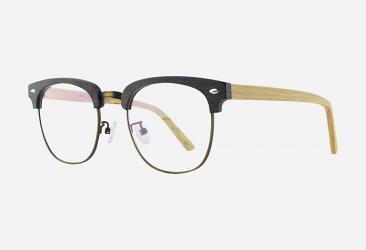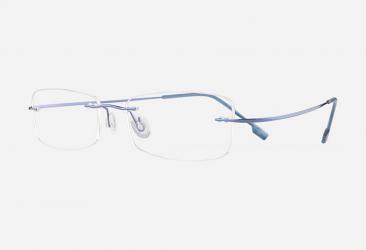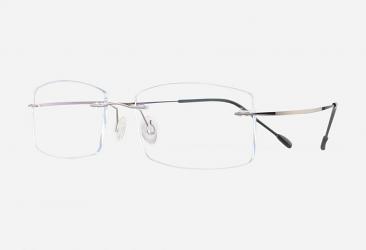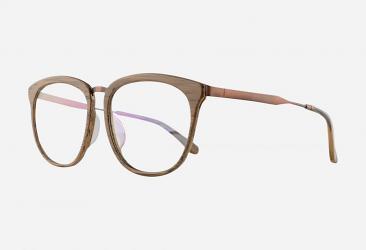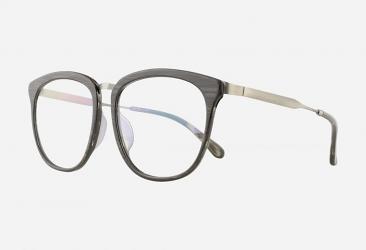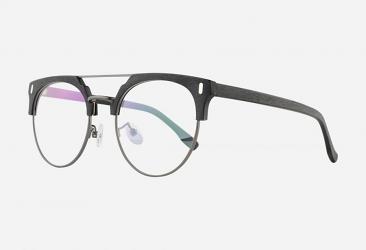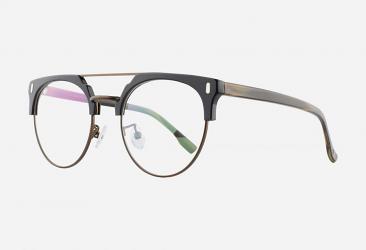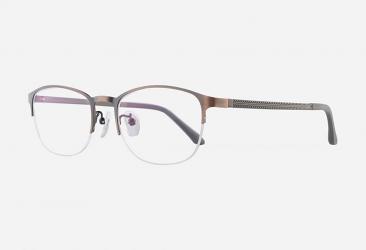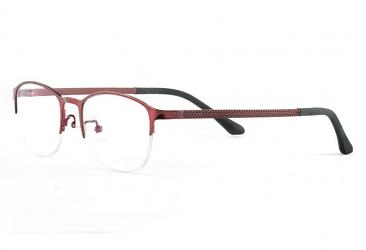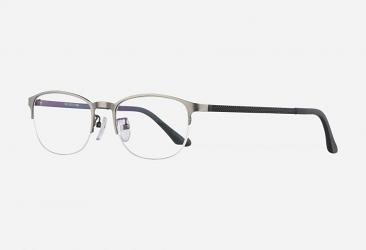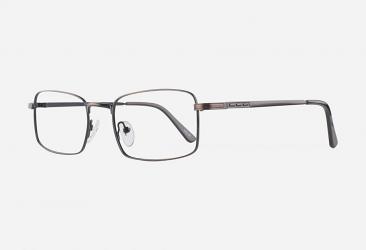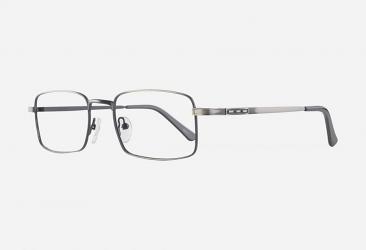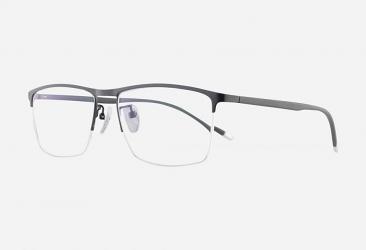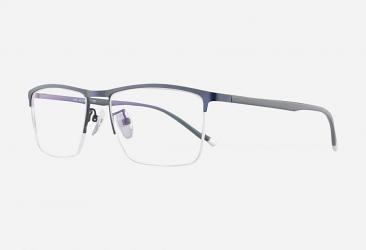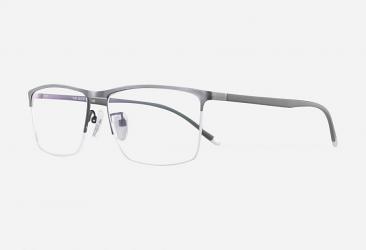Progressives / Bifocals
Progressive Eyeglasses
Many of our customers require multifocals, like progressive lenses. These lenses accommodate for both near and far vision by adding a unique lower lens with ADD vision value for reading and near vision, without the obvious line of bifocal lenses.
Progressive eyeglasses are glasses with no-line, multifocal lenses. You get two or three different vision prescriptions in one lens that is not marred by visibly horizontal lines. Instead of needing several pairs of glasses to drive, work, read or perform computer work, progressive eyeglasses allow you to do all these things with just one pair of glasses. Depending on whether you need to see something far away, up close or at mid-range determines your head position.
Tips for Adjusting to Your Progressive Glasses
Adjusting to any kind of eyewear takes a little time, depending on the differences between your old prescription and your new prescription. To help facilitate adjustment to progressive lenses:
- Don't switch back and forth from your old glasses to your new progressive glasses. This just delays retraining the vision center of your brain to focus and interpret images seen through your new lenses.
- Wear your progressive eyeglasses as high on your nose as possible. This optimizes the range of vision you have through either lens.
- When using a specific prescription embedded in the lenses, remember to move your head to see clearly, not your eyes. Bring objects into focus by pointing your nose at the object and moving your chin into an appropriate position.
- Practice using your multifocal glasses by reading and watching television simultaneously. Learning to move your chin up and down to see your reading material and watch TV is a good way to quicken your transition.
Most people find progressive lenses easy to get used to since the shift between prescriptions is gradual. Alternately, strictly bifocal lenses have a distinct line separating different strengths that may be distracting to those who have certain vision or eye muscle issues. If you have been diagnosed with presbyopia, progressive lenses offer a younger appearance by using corrective lenses that do not have the obvious line across the bottom of the lenses.
Multifocal lenses have definitely evolved with the development of modern manufacturing techniques. Unlike bifocal lenses that have a distinct line separating the distance and reading prescriptions, progressive lenses seamlessly integrate the powers and provide an intermediate range. With the innovation of the digital progressive lens, you can also expect a high-definition viewing capacity and extended peripheral vision. Distortion is minimized and the precision of your prescription is maximized. Get the best option for your multifocal needs, including anti-reflective, scratch resistant, and UV protective coatings, at an exceptional value compared to traditional optical retailers.
While single vision lenses come free with every pair of 21DollarGlasses.com glasses, we know many of you may require multifocal lenses, like bifocals. These lenses accommodate for both near and far vision by adding a unique lower lens with ADD vision value for reading and near vision.
Any frames with a lens height above 30mm are eligible for these lenses. Typically, we reserve 60% of lens height for distance vision, and the remaining 40% for near vision. If this is not what you would like for your multifocal lenses, simply let us know in the “Add Extra Information” box while entering your prescription and we will customize your order. Over 80% of our frames can be made with bifocal lenses. So go ahead, find your next pair.
Why Do People Need Bifocal Lenses?
Bifocals help people who are both nearsighted and farsighted see clearly. Bifocal glasses have two different corrective lenses to accommodate this specific vision problem. In some cases, wearing bifocal eyeglasses can also improve the vision of those diagnosed with astigmatism or other refractive issues.
Signs You May Need a Bifocal Prescription
One of the main signs your eyes are changing and require bifocal correction is if you notice you see things up close more clearly, when you take off the glasses you are currently wearing. Looking through a pair of prescription bifocal lenses with a special lens insert at the bottom of each lens will allow you to read or see what is written on a computer screen without taking off your old glasses.
If you can read something better while wearing your current glasses and holding the book or pill bottle at arm's length, you probably need bifocal glasses.
Recurring headaches, neck strain and upper shoulder pain may indicate your eyes have changed and need a different prescription. Unconsciously squinting or holding your head a certain way for long periods will eventually cause muscle discomfort in your face, neck and shoulder areas.
Bifocal Glasses Improve Astigmatism and Presbyopian
Even if you are not nearsighted or farsighted, bifocal lenses can reduce blurriness due to astigmatism, a vision disorder caused by having a misshapen eye lens or elongated cornea. Astigmatism also creates issues with the glare in sunlight or partial sunlight that may interfere with your ability to see and drive at night.
Bifocals are also prescribed to people with presbyopia, a condition common to those over 40. Aging naturally causes a reduction in the eye's ability to quickly focus on up-close objects. Presbyopia is not a disorder or disease, nor is it similar to farsightedness. Instead, presbyopia is attributed to decreased flexibility in the eye's lens due to aging.

